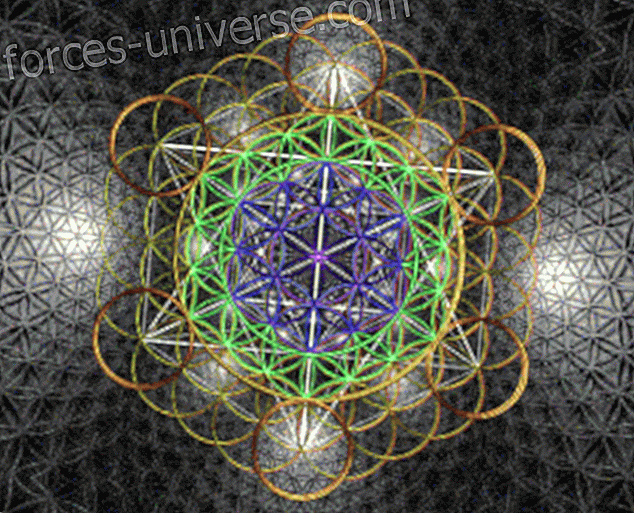When talking about meditation, it must always be contextualized in its range of action, since this human activity extends to both the practical and theoretical dimensions . So we would talk about health meditation, guided, sleep meditation, etc., or also contemplative or theoretical meditation. We will discuss the last in this post.
First difficulties of contemplative meditation

Reaching whatever contemplative or theoretical meditation is reserved only for the brave, those who dare to think: sapere aude! The contents of such meditation are only conceptual. But the first impulse ( προαιρησισ or proaíresis ) to start and maintain this activity over time; It transcends the conceptual. Regarding which, in the Aristotelian division of the virtues in ethics and dianoethics, the meditation of which we speak would correspond to the νουζ (nous) or intelligence; However, the impulse or intention would be prior, as the natural tendency of being towards good.
In this way, as long as the nucleus, the tendency for the good of thinking beings would solve our entelechy, because it is our form and our end, and therefore, contemplative or theoretical meditation, like all other human activities, would be subsumed to good. .
Not surprisingly, great philosophers have meditated on classical metaphysical objects, and some like Aristotle have concluded that God would be the best thinker and meditator that exists, because he contemplates all possible worlds and creates them in a perfect impulse, being He the first engine and the cause of everything that exists; at the same time that he contemplates himself in a pure act.
Thought as an instrument of contemplative meditation

What is the compass and the square to the geometer, the hammer and the anvil to the blacksmith, the pencil and the paper to the writer, is the thought to the thinker. All instruments of the arts and sciences are applied to objects as raw, for subsequent material transformation (matter as body (pistis: belief) -, phenomenon (dianoia: reasoning) - or idea - (noesis: intentional act of consciousness to capture ideas).
The same and not otherwise thought is applied, moved or related to a conceptual content; eg: when thinking about a cup of coffee, the categorical system automatically positions it conceptually. In contemplative or theoretical meditation, we only navigate in what is thrown by the categorical system, p. ex : it is a white cup broken by an edge placed to my left next to my laptop. After which and with much effort, we can establish a definition of the monemas or parts of the phrase.
However, meditation itself is distinguished from the mere thought that it applies thought to the object or conceptual content with great attention, the most exhaustive being that in which each conceptual content is simple or not composed, in other words, think until you reach the essences .
This exhaustive meditation is nothing other than understanding or intelligence, whose particularity lies in the fact that it constitutes principles ( hypothesis ). The understanding would be like this; it is common to all sciences, that is, the cognitive subject trying to reach the scientific essences: the modus ponens en logica, the law of universal gravitation in physics, the anatomical disposition in medicine allographic relationships of all parts of the body-, & c.
Theoretical and practical meditation

The main difference between one and the other is that in the first one it is privileged to think, in the second one it is strictly excluded, it cancels or includes but not as the protagonist, since the practical meditation starts from the assumption that the practical lies in a framework of emotional-passionate intelligence (φρονησισ or frónesis), interpersonal and intersubjective.
In short, the first or theoretical meditation seeks better concepts, while practical meditation seeks to achieve a better life . Obviously, the practical and the theoretical are not split, but depending on what is chosen with preference to display the προαιρησισ (proairesis) or intention ; it would be the measure and constitution of the personal worldview. It could be said in a certain way that contemplative meditation is characteristic of the philosopher who seeks to penetrate with his thoughts the confines of reality, while practical meditation is for all those seekers who want to improve their emotional aspects.
What is contemplative meditation for?

On the other hand, as thought is the "tool" of this type of meditation, we can find the eidetic essences, and visualize that there are two essential aspects in them: Reality ( ens reale ) and cognitive uptake ( ens rationalis ). In this, we can perform an exercise that seeks to omit or suspend the accidental nature of the phenomenal world, to keep its residue: the essences.
Likewise, we can take our own images or “mandalas ” out of our interiors (under εἶδος (eidos) as a process that tends to convert the thought of thought abstractions into images. This process is called eidetic thinking, being common in children, in the thinking of the primitive peoples and in the artistic plane) Hence, what reason was it when Jesus Christ said: "Truly I tell you that if you do not convert and become like children, you will not enter the kingdom of heaven . " Since this type of thinking brings us closer to substances and to the symbolic - Divine .
In this sense, contemplative or theoretical meditation, serves to abstract from our reality simple substances, think about thinking, perform metapsychological exercises and see the relationship of substances among others, and understand what their energy is (act and force ).
So, meditate on one's own thinking, before questions such as eg: what are the substances that serve as sources of my internal actions? Or in other words , what holds me as a cognitive subject to the world? ; What regulates my actions, and my own thoughts? It would help us to look for different answers, to make a mental transmutation of different states, by virtue; either of symbolic or logical essences found by meditation, and in parallel it helps us to have a better clarity of ourselves before an internal conflict.
Author: Kevin Samir Parra Rueda, editor in the great family of Hermandadblanca.org
More information:
- Ferrater, J. (1964). Dictionary of Philosophy. (5th ed.). Buenos Aires, Argentina: South American Editorial.
- Psychology for students. (producer). (2017, March, 31). Metapsychology, basic concept. [YouTube program]. Available: https://www.youtube.com/watch?v=8A6ZZguO5rs [Accessed: 2019, May 17]






